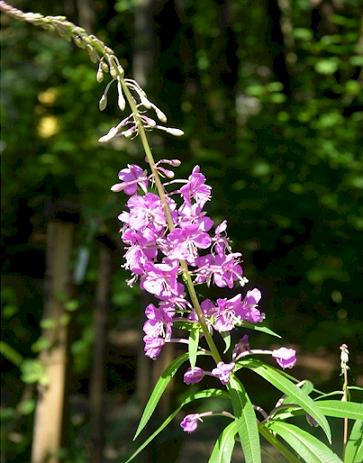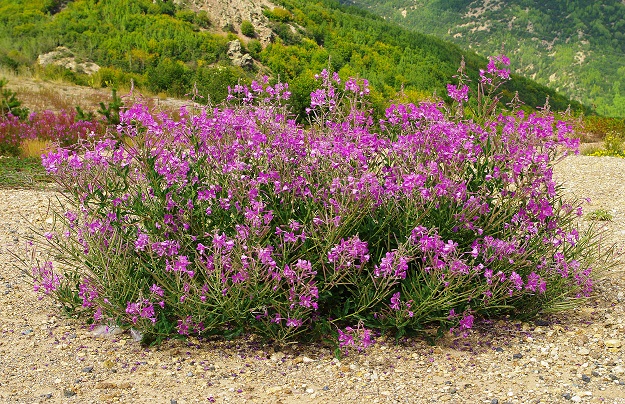|
|
|
Hansen's Northwest Native Plant Database |
|
|
|
Chamerion angustifolium var. canescens (Fireweed)
|
 |
|||||||||||||||||||||||||||||||||
|
||||||||||||||||||||||||||||||||||
|
Fireweed is found across North America and is extremely hardy, USDA zones 1-9. The flower spikes open from the bottom up and can be subtle rose pink to vibrant magenta in color. After bloom has finished, the seed pods open to release white fluffy substance designed to let the wind carry the seeds to new areas, thus spreading the species. In the garden, the spent flower stems can be cut back to the foliage where new, smaller flower stems will grow up to give a second bloom. This is not a difficult flower to grow given adequate sunlight and plenty of space to grow. Adding a handful of wood ash in the planting hole is a tradition among old time gardeners and the plants seem to thrive on it. Photo, right, credit: Zeynel Cebeci |
 |
|||||||||||||||||||||||||||||||||
|
Fireweed is the floral emblem of the Yukon. Some natives in that region say you can tell how hard the winter will be by how high the plant blooms. Fireweed honey: Different plants give the honey different flavors. This honey is light in color, with a nice buttery taste--a wonderful table honey. |
||||||||||||||||||||||||||||||||||
|
Photo, left, credit: Shyamal Norway; Photo, right, credit: Friedrich Böhringer |
||||||||||||||||||||||||||||||||||
|
Photo, right, credit: AnRo0002 |
||||||||||||||||||||||||||||||||||
|
Photos, above, left to right: Flower buds, credit: AnRo0002; Full bloom, credit: Tamerlin Tatry; Last of the flowers, credit: 4028mdk09_2011; Seeds just beginning, credit: Commons Snežana Trifunović; Seeds closeup, credit: Walter Siegmund |
||||||||||||||||||||||||||||||||||
|
Photo, left, credit: AnRo0002; Photo, right, credit: AnRo0002 |
||||||||||||||||||||||||||||||||||
|
Photo, left, credit: Benjamin Zwittnig; Photo, center, credit: Chris Gunns Castell Henllys, http://www.geograph.org, U.K.; Photo, right, credit: Aphidoidea |
||||||||||||||||||||||||||||||||||
|
Photo, left, credit: Famartin, near the upper Jarbidge River Canyon in Nevada; Photo, center, credit: Ianaré Sévi; Photo, right, credit: Glacier NPS, Sinopah Mt. |
||||||||||||||||||||||||||||||||||
|
Photo, left, credit: USFWS, Alaska; Photo, center, credit: Tifoultoute, Taylor Highway; Photo, right, credit: kallerna |
||||||||||||||||||||||||||||||||||
|
Photo, left, credit: Friedrich Böhringer; Photo, center, credit: Artem Topchiy; Photo, right, credit: Dave Bevis, Calverley Bridge, http://www.geograph.org, UK |
||||||||||||||||||||||||||||||||||
|
Photo, left, credit: Unhindered by TalentNic McPhee, Denali National Park rail tracks; Photo, center, credit: Famartin, Wildflowers along the northwest view down the upper Jarbidge River Canyon, Nevada; Photo, right, credit: Σ64 |
Photos We Share!
|
|||||||||||||||||||||||||||||||||
|